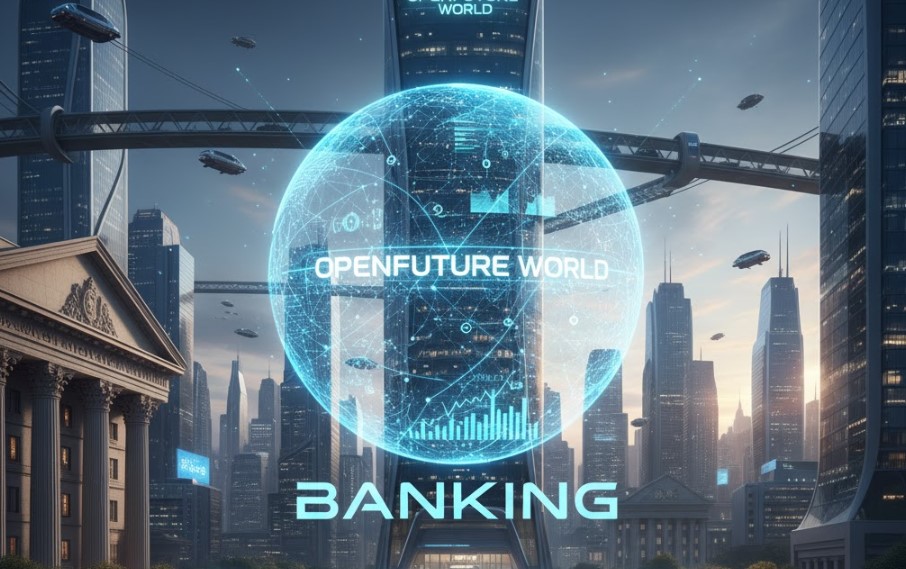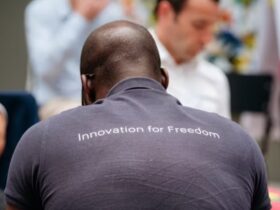The world of banking is evolving at an unprecedented rate, driven by technological innovation, shifting consumer expectations, and a growing demand for more transparent and inclusive financial systems. At the forefront of this transformation is the concept of the OpenFuture World—an emerging paradigm that promises to reshape how financial institutions operate, how they interact with customers, and how they leverage data and technology to drive value.
In this article, we will explore the concept of banking within the OpenFuture World, its implications for consumers and businesses, and how it aligns with current trends in open banking, digital transformation, and financial inclusivity.
What is the OpenFuture World in Banking?
The OpenFuture World in banking refers to a vision for the future of financial services that leverages open banking principles, cutting-edge technologies, and greater transparency to provide better outcomes for both consumers and financial institutions. At its core, it is about empowering customers through access to financial data, enhancing financial inclusion, and creating innovative banking solutions that cater to a broader range of needs.
Key Elements of the OpenFuture World in Banking
- Open Banking: Open banking is a concept where banks and financial institutions share data with third-party providers through secure APIs (application programming interfaces). This allows customers to have greater control over their financial data and access personalized financial services and products. Open banking is a key driver of the OpenFuture World, enabling data interoperability and fostering competition within the financial sector.
- Advanced Technologies: The OpenFuture World integrates artificial intelligence (AI), blockchain, cloud computing, and big data to create smarter, more efficient banking systems. These technologies allow for real-time transactions, improved fraud detection, and automated financial advice, providing customers with more seamless and secure banking experiences.
- Transparency and Security: As consumers demand greater transparency in their financial transactions and relationships with banks, the OpenFuture World emphasizes the importance of clear, transparent banking practices. By leveraging technologies like blockchain and cryptography, financial institutions can offer more secure and trustworthy services.
- Financial Inclusion: One of the primary goals of the OpenFuture World is to increase financial inclusion, ensuring that underserved populations have access to banking services. Through digital platforms and open APIs, more people can access essential financial products, regardless of their geographical location or financial background.
How OpenFuture World is Reshaping the Banking Sector
The traditional banking model has long been centralized, with a few major players controlling most of the financial services. However, as the world shifts toward the OpenFuture model, we see several significant changes that are redefining the banking experience:
1. Increased Competition and Consumer Choice
The OpenFuture World fosters a competitive landscape where smaller financial technology (fintech) companies can challenge traditional banks. By providing more personalized, agile, and customer-centric services, these companies are forcing larger institutions to innovate. This increase in competition ultimately benefits consumers, as they now have access to a wider range of products and services that better suit their needs.
Example:
Consider open payment platforms like PayPal and Venmo. These services have disrupted traditional payment models, offering more flexible and convenient solutions. As open banking APIs expand, new competitors will enter the market, giving consumers more options for managing their finances.
2. Data-Driven Personalization
Data is the backbone of the OpenFuture World. With open banking, banks can access a broader range of data points that allow them to offer hyper-personalized banking experiences. AI algorithms can analyze consumer behavior, preferences, and spending habits to deliver tailored product recommendations and financial advice.
Example:
AI-powered chatbots can offer real-time assistance to customers, suggesting the most suitable loan products based on their financial history. Similarly, predictive analytics can help identify potential credit risks and proactively offer solutions to mitigate those risks.
3. Seamless Cross-Border Transactions
As financial services become more interconnected, the OpenFuture World enables cross-border transactions to be faster and more cost-effective. Blockchain technology, in particular, has the potential to revolutionize international payments by offering a secure, decentralized ledger that reduces the need for intermediaries, thereby lowering transaction fees and speeding up processing times.
Example:
Blockchain-based platforms like Ripple and Stellar are already facilitating fast, low-cost cross-border transactions, allowing individuals and businesses to send money globally with minimal fees and wait times.
The Role of Open Banking in Shaping the OpenFuture World
Open banking plays a pivotal role in the OpenFuture World by creating an ecosystem of interoperability and collaboration. As more banks adopt open banking principles, they enable third-party developers to create innovative financial products that extend beyond traditional banking services. This fosters financial innovation and customer empowerment, which are core tenets of the OpenFuture vision.
Benefits of Open Banking in the OpenFuture World
- Improved Customer Experience: Open banking allows customers to access a wider variety of services from different providers. Instead of being tied to one bank, consumers can choose from a range of services, including budgeting tools, investment platforms, and personal finance management apps—all integrated into a single platform.
- Financial Products That Meet Specific Needs: Open banking gives consumers access to products that are tailored to their unique financial situations. For example, individuals with a low credit score may be offered alternative lending options, while high-income earners can access premium investment products.
- Greater Transparency in Fees and Terms: Open banking also forces banks to disclose their fees and terms more transparently. With access to competitive offerings, customers are no longer in the dark about potential hidden costs, making them more empowered to choose the best options for their financial needs.
Challenges and Opportunities in the OpenFuture World
1. Regulatory Challenges
While the OpenFuture World offers immense potential for transformation, it also faces regulatory hurdles. Governments and financial regulators must establish frameworks to ensure that open banking systems remain secure, fair, and transparent. As open banking becomes more widespread, regulators will need to update existing laws and introduce new ones to address issues such as data privacy, cybersecurity, and customer consent.
Example:
The European Union’s General Data Protection Regulation (GDPR) and the Revised Payment Services Directive (PSD2) have been significant steps in regulating data privacy and ensuring security within open banking systems. These regulations are vital for protecting consumers’ sensitive financial information.
2. Security and Privacy Concerns
With increased data sharing comes the need for stronger cybersecurity measures. Ensuring the security of customer data is a top priority in the OpenFuture World. Banks and third-party providers must implement robust security protocols to prevent breaches and fraud.
Example:
Blockchain technology offers a potential solution by providing an immutable and transparent ledger. This ensures that financial transactions are securely recorded and cannot be tampered with, providing consumers with an added layer of trust.
The Future of Banking in the OpenFuture World
As the OpenFuture World continues to unfold, we can expect to see even greater innovation and disruption in the financial services industry. The future of banking will be characterized by:
- Increased Automation: The use of AI and machine learning will drive greater automation in customer service, loan underwriting, and fraud detection, improving efficiency and reducing costs for both banks and consumers.
- Embedded Finance: Financial services will become embedded within a wide range of digital platforms, such as e-commerce websites and social media apps. This will allow customers to access financial products directly within the platforms they already use.
- Digital Currencies and Central Bank Digital Currencies (CBDCs): The rise of digital currencies, including CBDCs, will change the way we think about money and payments. These digital currencies could be integrated into the OpenFuture World to enable faster, more secure transactions without relying on traditional banking systems.
Conclusion
The OpenFuture World represents a transformative shift in the banking landscape, one that promises to deliver more personalized, inclusive, and transparent financial services. By embracing open banking, advanced technologies, and a customer-centric approach, banks and fintech companies can unlock new opportunities and create a more equitable financial ecosystem for all.
As the OpenFuture vision becomes a reality, financial institutions must navigate the challenges of regulation, security, and competition while seizing the opportunities to innovate and provide more value to consumers. The future of banking is open, and it is poised to revolutionize the way we manage and interact with our finances.
FAQs
What is Open Banking?
Open banking is a system where banks allow third-party providers to access financial data through secure APIs, enabling the creation of more personalized financial products and services.
How does blockchain contribute to the OpenFuture World?
Blockchain provides a secure, transparent, and decentralized system for recording financial transactions. It helps improve the efficiency of cross-border payments and ensures data integrity.
What are the challenges of Open Banking?
Some challenges include ensuring data security, complying with regulatory requirements, and addressing concerns around consumer privacy and cybersecurity.
For More Updates Visit: Biomagazine











Leave a Reply